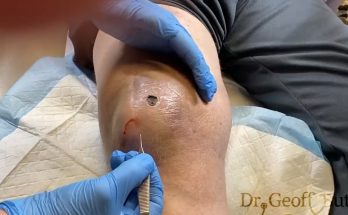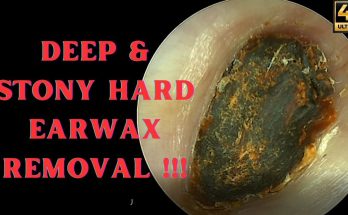
Waking up to a smattering of unwelcomed pimples across your face is arguably one of the most frustrating skin-care dilemmas you can deal with. Often, it sends us into a scrambling “fix it!” mode, where we pick, pinch, touch, and reach for all sorts of skin-care concoctions as we send a prayer up to the complexion gods. As eager as you might feel to just nip the issue, though, some common mistakes can actually make things worse. To ensure you avoid these skin-care no-no’s, we asked pros to weigh in on what you should never do when you’re breaking out.
- Cybele Fishman, M.D., is a board-certified dermatologist with Advanced Dermatology PC.
- Kate Deery, BSN, R.N., is a certified aesthetician and makeup artist at Clareo Aesthetics.
Don’t: Pick at Your Pimples
Your very first instinct might be to squeeze or pick at any new pimples, but try to hold yourself back.
“When you pick at a pimple, you increase the inflammation as well as introduce more bacteria into the skin, possibly causing an infection,” warns Cybele Fishman, M.D., a board-certified dermatologist with Advanced Dermatology PC. “More inflammation means a longer-lasting pimple, more chance of a scar, and more chance of persistent redness in lighter skin or hyperpigmentation in darker skin.”1
What to Do Instead: If you know you can’t resist picking, place a hydrocolloid patch over the pimple. Dr. Fisherman says that this keeps your fingers away, keeps bacteria out, and absorbs pus.
Don’t: Overuse Exfoliating Ingredients
When it comes to breakouts, taking a more-is-more approach might seem like the best plan of action. Take advantage of exfoliating, acne-targeting ingredients such as salicylic acid and benzoyl peroxide, but do so with some restraint.
“Over-exfoliating can dry out your skin, strip the skin of its natural oils, and for acne-prone skin it can aggravate it, which causes more inflammation,” notes Kate Deery, BSN, R.N., a certified aesthetician and makeup artist at Clareo Aesthetics.2
What to Do Instead: Gentle, intentional care is much better for the health of your skin. Deery says that exfoliation should be done no more than two to three times per week, and that you shouldn’t scrub or rub your skin when using these products. If you’re dealing with an isolated breakout, use a targeted spot treatment on the affected skin versus all-over application.
Don’t: Overwash Your Face
While poor hygiene can contribute to breakouts in some instances, we now know that the cause of acne is far more complex than that. Still, there’s old advice out there that insists you should wash your face more or reach for astringent, drying cleansers when dealing with a breakout. Don’t do that! Overwashing your face can actually exacerbate acne.3
What to Do Instead: Similar to the advice above, it’s important to take a gentler approach when dealing with breakouts. Wash your face no more than twice per day—or after working out/sweating—and always use a gentle cleanser. Avoid scrubbing or rubbing, and gently pat your skin dry.
Don’t: Skip Moisturizer
People with oily skin might feel like they need to avoid moisturizer altogether, but this can also worsen acne. In fact, a lack of moisture on your skin’s surface may trigger your body to produce more oil to make up for what it’s lacking. This is how you end up with a dried-out, flaky, and red complexion with an oil slick on top.3
What to Do Instead: You don’t need to use a heavy moisturizer if you have oily skin. Instead, use an oil-free, water-based moisturizer. Better yet, choose a product formulated with soothing ingredients such as aloe vera, cica, peptides, or cucumber extract. Use it every time you wash your face.
Don’t: Use Topical Exfoliants on Cystic Acne
Cystic acne is characterized as deep, large, painful pimples that sit deeper under the skin. Topical exfoliating ingredients—like salicylic acid and benzoyl peroxide—can help on a surface level, but they’re not going to do a whole lot for your complexion.
“Both of those ingredients are drying and irritating to the epidermis, and are not getting to the deeper dermis where the pimple’s inflammation is,” notes Dr. Fishman. “They [can] make the pimple look more noticeable by causing redness and flaking to the skin around the pimple.”
What to Do Instead: For cystic acne, it’s best to visit with a dermatologist. They can provide a cortisone injection to quickly eliminate one or two cystic spots. For persistent cystic acne, they may want to dive deeper and get you on a treatment plan that addresses the issue head-on.
Don’t: Feel Down On Yourself
Breakouts can conjure all sorts of feelings—frustration, self-consciousness, and maybe even sadness. Dr. Fishman says that even if the issue is persistent you should avoid beating yourself up.
“I often have patients come in, sometimes crying, because they can’t understand why they are breaking out. I explain that acne is multifactorial, meaning many things play a role including things not in your control like genetics, how your skin reacts to hormones, pollution in your environment,” Dr. Fishman says.
What to Do Instead: Recognize that everyone is susceptible to breakouts, and that there are steps you can take to get a clearer complexion. Dr. Fishman says, “It will be OK. Find a dermatologist who loves treating acne and will be empathetic to your concerns.” From there, focus on things you can control, like eating anti-inflammatory foods, getting enough sleep, using clean bedding, and reducing stress.


